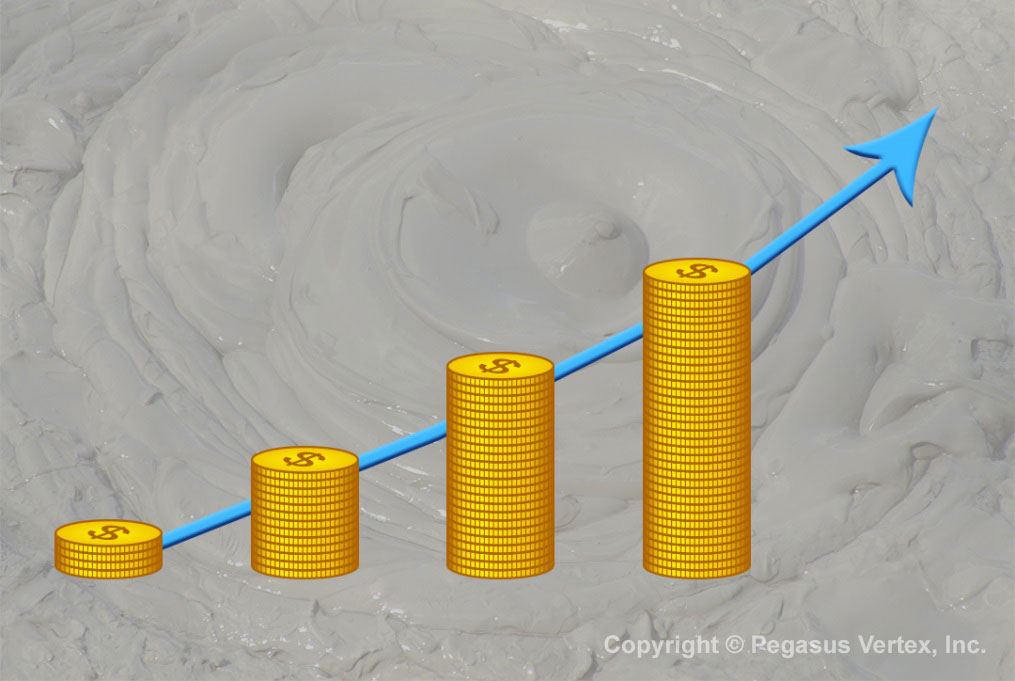ScienceNewsforKids.org has recently posted an article titled “Mud worth than gold”, which happened to be the “Nose in the News” project for my 3rd grade son. Though this article is a little hard for a 3rd grader to analyze, its title is rather attractive. The article tells the sample mud collected from far below Antarctica’s ice by two scientists and their drilling crew contains valuable information. This might help reveal the secrets of the continent’s ancient climate, thus help on future weather prediction.
Coincidentally, in this September, a report from “marketsandmarkets.com” also has something to say about mud. The report with a long title "Drilling Fluids (Drilling Mud) Market and Completion Fluids Market: by Types (Water-Based Systems, Oil-Based Systems, Synthetic-Based Systems, Other Based Systems), Application Areas (Onshore and Offshore), & Geography - Global trends and forecast to 2018 " defines and segments the global drilling fluids and completion fluids market with analysis and revenue forecast. It predicts that the drilling fluids and completion fluids market will grow from an estimated $10.6 billion in 2013 to $15.2 billion by 2018.
Regardless of its meaning and the context, the title of J. R. Tolkien’s poem “All that is gold does not glitter” would certainly apply to drilling mud. According to industry statistics, drilling mud takes approximately 10% to 15% of the total drilling cost. With the needs of more deep sea drilling and ever fast drilling rate, drilling fluids are used on day-to-day basis and plays a vital role in drilling process: controlling formation pressure, sealing permeable formations, stabilizing the wellbore, suspending the drill cuttings, and cooling and lubricating the drilling bit etc.
Drilling fluids are basically categorized into 3 types: water-based mud (WBM), oil-based mud (OBM) and synthetic-based fluid (SBM). When choosing a drilling fluid, factors like well design, cost, technical performance, environmental impact all need to be considered. WBM and OBM are commonly used nowadays. They are complex compositions with various additives such as minerals and chemicals. As the well drilling reaches various depths, it requires different type of drilling fluids to meet the specific drilling condition, where demands the balance between the properties and the additives in the mud. Small problems with mud may lead to severe problems like lost in mud circulation, gas escaping or even blowout.
Among those who work on the drilling rigs, mud engineers are the ones who frequently and closely deal with the drilling mud. Their job is 24/7. A mud engineer’s duty not only involves in prescribing mud treatments, maintaining the drilling fluids, but also keeping continuous mud reporting every day. To them, time management is more important than ever. Besides powerful computer aids, software like MUDPRO developed by PVI is a great way to enhance the mud engineer’s ability on mud data recording and analyzing, hydraulics calculating, inventory tracking and daily reports/recap generating.
As drilling technology advances, drilling fluids are innovated and designed to be not only cost effective but also environmentally safe. Research on Non-toxic bio degradable drilling fluids with nanotechnology is being conducted and huge investment is being made. This type of fluids not only provides higher transfer efficiency and better thermal conductivity but also removes toxic metals. After all, protecting the environment has enormous impact to our future generations.

